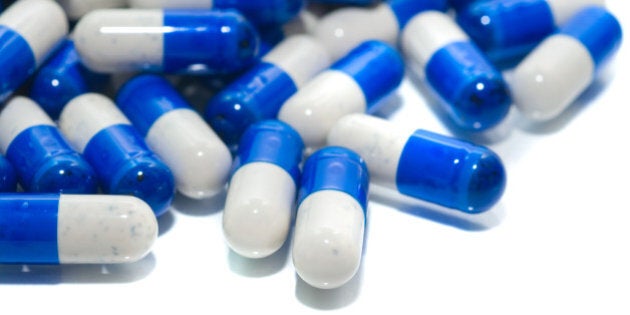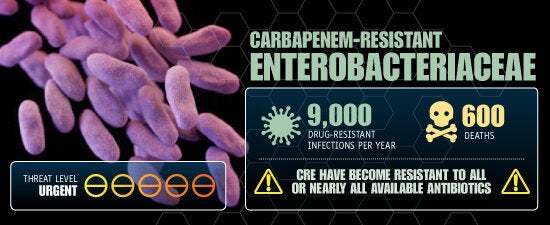
Although antibiotic resistance has been known for 70 years, the alarm has only recently been sounded. The World Health Organization has led the charge to raise awareness and ensure the public understands the looming crisis of what is commonly known as the post-antibiotic era. In essence, we may be forced to return to a world in which these life-saving medicines are no longer effective.
There are only a few ways to deal with this dilemma. The most effective option is perhaps the simplest: use less. In medicine, this practice, called stewardship, is ongoing and has helped to reduce the amounts prescribed. But in agriculture, which consumes by far the largest amount of these drugs to protect animals and improve their growth, this route has been rife with obstacles and complications.
Unlike humans, who have the ability to control infectious disease spread through hygiene, animals are continually vulnerable to infection. Antibiotics have been considered necessary to maintain the health of livestock and keep diseases out of the herds and flocks. While effective, this practice inevitably adds to the spread of resistance. The threat of a post-antibiotic era has led Health Canada to announce it will enact a ban on most antibiotics in 2017. The goal is to restrict the use such that drugs are only given when there is an actual infection.
At face value, the government action seems to be an excellent move forward. Yet for the farmer, this could mean a higher number of infections and ultimately a need to return to antibiotics, if only to save the animals. This conundrum, while known for years, still has relatively few solutions, leaving farmers between a rock and a hard place.
One of the most promising options to help farmers reduce antibiotic use and maintain the health of their animals involves the use of antibiotic alternatives. A number of chemical products have proven to improve the wellbeing of animals and prevent infection. While the research is ongoing across the globe, one Canadian group seems to have found a viable answer in the form of bioactives. But they didn't create these chemicals in the lab. Instead, they found them occurring naturally in a rather unlikely place: bacteria.
To learn more about bioactives, I reached out to Dr. Mansel Griffiths. He's a researcher at the University of Guelph and has developed bioactives in the hopes of reducing antibiotic use.
According to Griffiths, bioactives help bacteria survive in some of the harshest conditions and prevent the growth of any threatening species. "Bioactives work by interfering with cell-cell communication in a variety of bacteria by preventing the production of a universal signalling molecule," he says. "This gene is in many species of animal pathogens including E. coli, Salmonella, and Campylobacter. These molecule control virulence. "
While keeping a pathogen from growing is desirable, controlling its ability to cause infection is even more important. In many cases, the presence of the species is not the critical factor in determining whether disease occurs. The individual bacterial cells have to receive a chemical message telling them to invade and cause troubles. This process, called quorum sensing, is one of the most important factors in infectious disease and has been a target of several medicinal therapeutics.
When it comes to sourcing these bioactives, for Griffiths, there was no better place to look than human-friendly bacteria, probiotics. "Beneficial species such as Lactobacillus acidophilus and Bifidobacterium bifidum are well known to produce these bioactives," he says. "When we isolated them in the lab, we found they inhibited the virulence of a variety of pathogenic bacteria."
Griffiths also says there's another advantage to using bioactives from probiotic bacteria. "Using probiotic species means we know the bioactives are safe to animals. But more importantly, we can also use bioactives in combination with probiotic bacteria to add even more benefit to an animal's health," he says."
As for whether bioactives could eventually replace antibiotics in agriculture, Griffiths seems relatively optimistic. "These molecules can be used as prophylactics, so we think that they will help to reduce infections in animals and so reduce the need for antibiotics," he says. He also suggests there may also be a wider reason for choosing this route, adding "We have evidence from a pig trial performed earlier this year that animals fed the bioactives gained more weight than controls. Though the difference was slight, it shows these compounds may help the overall wellbeing of the animal."
Due to the apparent benefit of bioactives on animal health, Griffiths has teamed up with a company called MicroSintesis, headed by president and CEO Hannah McIver. I reached out to McIver to find out why she believes these molecules are so important. For her, there are two benefits: animal health and, as she points out, the potential to support and even replace antbiotics.
The bioactive mode of action is separate from an antibiotic's effect and therefore, it is anticipated, they will work even on strains of bacteria that have already acquired antimicrobial resistance," she says. "Because they also contribute to the body's natural defence system they can be consumed over extended periods of time, even in the most vulnerable populations."
As for when the product will be available, McIver hopes to be ready for the antibiotic ban. "We are working to launch the product in early 2017. We have received very positive feedback from both the Canadian and European regulatory agencies because they understand the need for viable alternatives to antibiotics and for ways to help producers deliver antibiotic-free products to satisfy consumer demand," she says.
Time will eventually decide whether bioactives are the future of agricultural alternatives to antibiotics. Yet, with the 2017 deadline looming, farmers need to examine any and all options. After all, while this advancement may be seen by most as a means of preventing the post-antibiotic era, for farmers, it may be a means to save their livelihood for years to come.
MORE ON HUFFPOST:
